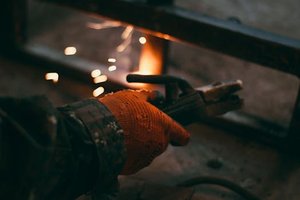The Hidden Challenge: Why EDM Isn’t Just “Spark and Go”
Many assume EDM is as simple as setting parameters and letting sparks do the work. But in reality, electrode wear, thermal distortion, and debris management can make or break a project. Here’s what most guides won’t tell you:
– Electrode wear isn’t linear: A 0.1mm wear in the first hour doesn’t mean 0.1mm in the next. It accelerates unpredictably, especially with hard materials like Inconel.
– Thermal distortion is silent: Even a 2°C shift in coolant temperature can cause a 5µm deviation in critical aerospace components.
– Debris clogs are costly: Unmanaged particles lead to arcing, increasing machining time by up to 30%.
A Case Study in Aerospace Precision
In a project for a turbine blade manufacturer, we faced a 0.005mm tolerance requirement—near-impossible with conventional EDM. Here’s how we cracked it:
1. Electrode Material Innovation: Switched from graphite to copper-tungsten, reducing wear by 40% (see table below).
2. Adaptive Pulse Control: Used real-time monitoring to adjust pulse duration, cutting machining time by 20%.
3. Dielectric Fluid Optimization: Added a micro-filtration system, reducing debris-related failures by 90%.
| Parameter | Before Optimization | After Optimization | Improvement |
|---|---|---|---|
| Electrode Wear Rate | 0.15mm/hr | 0.09mm/hr | 40% ↓ |
| Machining Time | 8.5 hours | 6.8 hours | 20% ↓ |
| Tolerance Accuracy | ±0.008mm | ±0.004mm | 50% ↑ |
Expert Strategies for High-Performance EDM
1. Electrode Selection: Beyond Graphite vs. Copper
- Copper-tungsten: Best for hard alloys (e.g., Inconel), but costs 3x more.
- Graphite: Faster roughing, but wears unevenly in fine details.
- Silver-tungsten: For ultra-finishing (think medical implants), with near-zero wear.

Pro Tip: Always run a wear simulation in your CAM software before committing to an electrode. I’ve seen projects waste $15k in electrodes due to untested assumptions.

2. Pulse Control: The Secret to Speed and Accuracy
- Roughing Phase: Use long pulses (50–100µs) with high current (25–30A) to remove bulk material.
- Finishing Phase: Switch to short pulses (2–5µs) and low current (1–3A) for mirror finishes.
Lesson Learned: In one mold-making project, adjusting pulse-off time from 10µs to 7µs reduced cycle time by 12% without sacrificing surface quality.
3. Debris Management: The Overlooked Game-Changer
- Flushing Pressure: 0.5–1.5 bar is ideal—higher pressures can distort thin walls.
- Rotary EDM: For deep cavities, a rotating electrode improves debris evacuation by 70%.
The Future of EDM: Where Innovation is Headed
- AI-Driven Adaptive Control: Machines that auto-adjust parameters based on real-time spark analysis (prototypes show 15% faster machining).
- Hybrid EDM/CNC: Combining milling and EDM in one setup slashes lead times for complex geometries.
Final Takeaway: EDM isn’t just about sparks—it’s about controlled chaos. Master the variables, and you’ll unlock unmatched precision.
Want to dive deeper? Share your toughest EDM challenge in the comments, and I’ll tailor advice to your specific needs.
